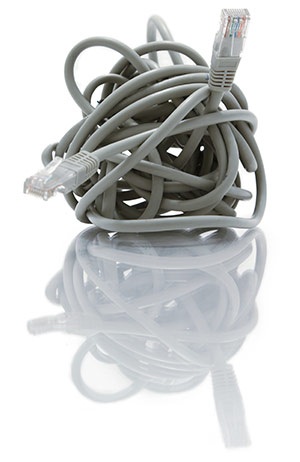Breaking up with IT: How to eliminate issues when changing tech partners
By: Bill King//October 18, 2012//
Breaking up with IT: How to eliminate issues when changing tech partners
By: Bill King//October 18, 2012//
By Bill King
 Information technology touches every part of a law firm, from basic day-to-day operations to larger security issues. So changing an IT provider, whether in-house or an outside vendor, can be potentially painful.
Information technology touches every part of a law firm, from basic day-to-day operations to larger security issues. So changing an IT provider, whether in-house or an outside vendor, can be potentially painful.
The following red flags can signal a need for a new direction:
- The provider (or in-house staff) becomes increasingly reluctant to provide timely reports on activities or projects.
- The provider doesn’t have the capability or processes to provide timely status reports.
- Service levels and responsiveness are inadequate.
- IT problems aren’t resolved in a timely manner, resulting in unhappy users.
- You’re seeing the same IT issues over and over.
These types of complaints typically beg a couple of key questions. First, what information are you not getting from the provider? Second, what is your IT provider’s role in advancing your firm’s goals? Once those gaps are identified, you can focus on the issues with the provider.
Sometimes, a breakup is inevitable, though, and those partings can be messy. In the worst case, there can be sabotage such as cut cables or fiber lines, data removed or destroyed, and passwords or remote access compromised.
Some of these problems can be avoided by being proactive. If you’re thinking of making the transition to a new provider, first conduct a visual inspection of your IT system with the help of a new IT staff person or outside vendor. It’s best to do this outside of the office or after hours so as not to attract the attention of the current staff members or provider.
During this inspection, be sure to verify that everything about your system is accurate, including system diagrams and passwords. You should also take a thorough inventory of all related information held by your current IT provider or staff members, such as technical and administrative documentation, support information, security logs, service agreements and software licensing.
Once this inventory is completed, use the information to create a transition plan. This plan should include a review of all risks, will guide you through the necessary steps to take action, and set a timeline for switching from one provider to another. It also must include requirements for sharing your company’s IT system information with the replacement IT staff member or vendor.
A common transition period is typically over a weekend so the replacement individual or vendor can step in before the start of the next work week. If you’re replacing an outside vendor, know and follow the terms of the contract so you’ll have recourse if the outgoing provider isn’t cooperative.
And transitioning to a new IT provider doesn’t mean your IT oversight should end. You should still document every IT system and keep that information current in case another switch is necessary down the line.
Though switching IT providers can be unpleasant, careful planning and execution can minimize or even eliminate discomfort to you and your firm.
Legal News
- Some State Bar diversity participants walk away from program
- Wisconsin court issues arrest warrant ‘in error’ for Minocqua Brewing owner
- Iranian nationals charged cyber campaign targeting U.S. Companies
- Facing mostly white juries, are Milwaukee County defendants of color truly judged by their peers?
- Milwaukee Mayor speaks in D.C. Tuesday at White House water summit
- Chicago man sentenced to prison after being caught with ‘Trump Gun’
- FTC bans non-competes
- Gov. Evers seeks applicants for Dane County Circuit Court
- Milwaukee man charged in dismemberment death pleads not guilty
- Democratic-led states lead ban on the book ban
- UW Madison Professor: America’s child care crisis is holding back moms without college degrees
- History made in Trump New York trial opening statements
WLJ People
- Power 30 Personal Injury Attorneys – Russell Nicolet
- Power 30 Personal Injury Attorneys – Benjamin Nicolet
- Power 30 Personal Injury Attorneys – Dustin T. Woehl
- Power 30 Personal Injury Attorneys – Katherine Metzger
- Power 30 Personal Injury Attorneys – Joseph Ryan
- Power 30 Personal Injury Attorneys – James M. Ryan
- Power 30 Personal Injury Attorneys – Dana Wachs
- Power 30 Personal Injury Attorneys – Mark L. Thomsen
- Power 30 Personal Injury Attorneys – Matthew Lein
- Power 30 Personal Injury Attorneys – Jeffrey A. Pitman
- Power 30 Personal Injury Attorneys – William Pemberton
- Power 30 Personal Injury Attorneys – Howard S. Sicula











